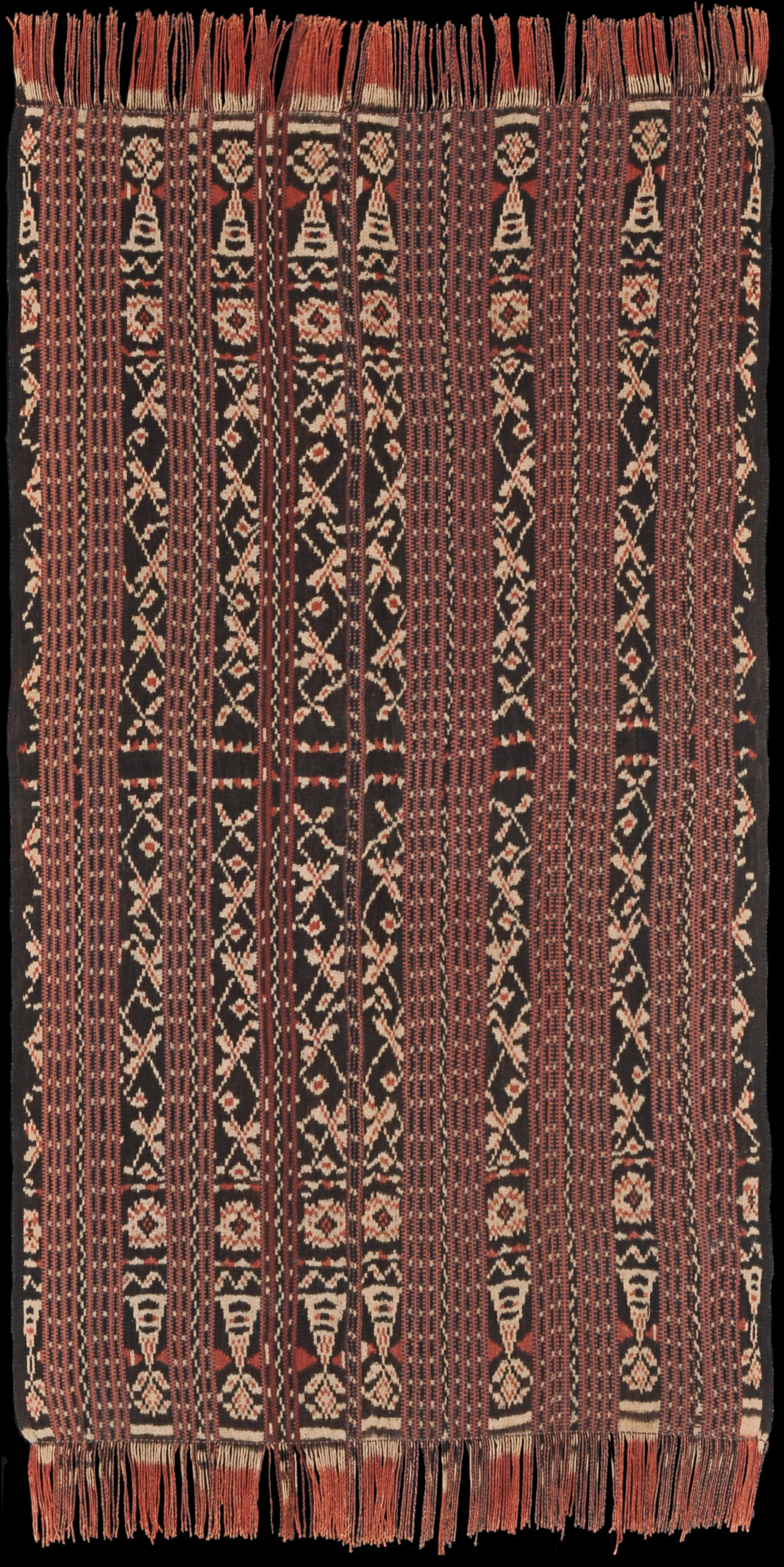| |
 mouse over to magnify mouse over to magnify
| | | | 008 Roti Group, Ndao
Blanket
| | Locale: | | | Period: | 1920-1940 | | Panels: | 2 | | Design: | Longitudinal bands in indigo, mauve. Strikingly asymmetrical - which is characteristic for Ndao, where Savunese influences on weaving are strong - at least as strong as those from neighbouring Roti. | | Size: | 88 x 159 cm (34.6 x 62.5 in) | | Yarn: | Cotton, hand-spun, coarse | | Comment: | Early 20th C. cloth from Ndao. Cloth has a pleasant well worn feel. The asymmetric 'Savunese-style' field division is a Ndao characteristic, as is the truncating of motifs. Like PC 006 the cloth has a dark mauve overall tonality, the result of the weaver having given equal weight to indigo and morinda. | | Background: | Additional information in chapters on Roti Group and Ndao. | | Published: | Woven Languages, 2014.
Ikat Textiles of the Indonesian Archipelago, 2018.
Ikat from Timor and its Outer Islands, 2022. | | Compare: | 006 125 234 290 | | Sources: | Similar men's shawl from the same period identified as 'Ndao (?)' in Voelger and Von Welck, c.s., Indonesian Textiles, Fig. 177. While not asymmetrical, it is similar in patterning. See also Irene Emery, Indonesian Textiles, the contribution on Roti and Ndao by Fox, Fig. 7, which shows a Ndao selimut that is also asymmetric, though less immediately noticeable. Also similar to Roti cloth from before 1861 in Museum voor Volkenkunde, Leiden, No. 16-261, and to Art Institute of Chicago, Bakwin Collection, No. 2002.953. On the Savunese style field division as characteristic of Ndao versus Roti see Fox In Gittinger, Indonesian Textiles, p.48 | | |
 ©Peter ten Hoopen, 2025
All rights reserved.
|
|


